*NURSING > EXAM > TEST BANK FOR MATERNAL CHILD NURSING 7TH EDITION BY MCKINNEY CHAPTER 1-52 COMPLETE SOLUTIONS. (All)
TEST BANK FOR MATERNAL CHILD NURSING 7TH EDITION BY MCKINNEY CHAPTER 1-52 COMPLETE SOLUTIONS.
Document Content and Description Below
TEST BANK FOR MATERNAL CHILD NURSING 7TH EDITION BY MCKINNEY CHAPTER 1-52 COMPLETE SOLUTIONS. Chapter 1: Foundations of Maternity, Women’s Health, and Child Health Nursing Test Bank MULTIPLE CHOICE ... 1. Which factor significantly contributed to the shift from home births to hospital births in the early 20th century? a. Puerperal sepsis was identified as a risk factor in labor and delivery. b. Forceps were developed to facilitate difficult births. c. The importance of early parental-infant contact was identified. d. Technologic developments became available to physicians. ANS: D Feedback A Puerperal sepsis has been a known problem for generations. In the late 19th century, Semmelweis discovered how it could be prevented with improved hygienic practices. B The development of forceps to help physicians facilitate difficult births was a strong factor in the decrease of home births and increase of hospital births. Other important discoveries included chloroform, drugs to initiate labor, and the advancement of operative procedures such a cesarean birth. C Unlike home-births, early hospital births hindered bonding between parents and their infants. D Technological developments were available to physicians, not lay midwives. PTS: 1 DIF: Cognitive Level: Knowledge REF: p. 2 OBJ: Nursing Process: Assessment MSC: Client Needs: Safe and Effective Care Environment 2. Family-centered maternity care developed in response to: a. Demands by physicians for family involvement in childbirth b. The Sheppard-Towner Act of 1921 c. Parental requests that infants be allowed to remain with them rather than in a nursery d. Changes in pharmacologic management of labor ANS: C Feedback A Family-centered care was a request by parents, not physicians. B The Sheppard-Towner Act provided funds for state-managed programs for mothers and children. C As research began to identify the benefits of early extended parent-infant contact, parents began to insist that the infant remain with them. This gradually developed into the practice of rooming-in and finally to family-centered maternity care. D The changes in pharmacologic management of labor were not a factor in familyS - The Marketplace to Buy and Sell your Study Material Downloaded by: Ariah | Distribution of this document is illegal S - The Marketplace to Buy and Sell your Study Material centered maternity care. PTS: 1 DIF: Cognitive Level: Knowledge REF: p. 3 OBJ: Nursing Process: Assessment MSC: Client Needs: Psychosocial Integrity 3. Which setting for childbirth allows the least amount of parent-infant contact? a. Labor/delivery/recovery/postpartum room b. Birth center c. Traditional hospital birth d. Home birth ANS: C Feedback A The labor/delivery/recovery/postpartum room setting allows increased parentinfant contact. B Birth centers are set up to allow an increase in parent-infant contact. C In the traditional hospital setting, the mother may see the infant for only short feeding periods, and the infant is cared for in a separate nursery. D Home births allow an increase in parent-infant contact. PTS: 1 DIF: Cognitive Level: Knowledge REF: p. 3 OBJ: Nursing Process: Planning MSC: Client Needs: Health Promotion and Maintenance 4. As a result of changes in health care delivery and funding, a current trend seen in the pediatric setting is: a. Increased hospitalization of children b. Decreased number of children living in poverty c. An increase in ambulatory care d. Decreased use of managed care ANS: C Feedback A Hospitalization for children has decreased. B Health care delivery has not altered the number of children living in poverty. C One effect of managed care has been that pediatric health care delivery has shifted dramatically from the acute care setting to the ambulatory setting. One of the biggest changes in health care has been the growth of managed care. The number of hospital beds being used has decreased as more care is given in outpatient settings and in the home. The number of children living in poverty has increased over the last decade. D Managed care has increased in order to control cost. PTS: 1 DIF: Cognitive Level: Knowledge REF: p. 6 OBJ: Nursing Process: Planning MSC: Client Needs: Safe and Effective Care Environment 5. The Women, Infants, and Children (WIC) program provides: S - The Marketplace to Buy and Sell your Study Material Downloaded by: Ariah | Distribution of this document is illegal S - The Marketplace to Buy and Sell your Study Material a. Well-child examinations for infants and children living at the poverty level b. Immunizations for high-risk infants and children c. Screening for infants with developmental disorders d. Supplemental food supplies to low-income women who are pregnant or breastfeeding ANS: D Feedback A Medicaid’s Early and Periodic Screening, Diagnosis, and Treatment Program provides for well-child examinations and for treatment of any medical problems diagnosed during such checkups. B Children in the WIC program are often linked with immunizations, but that is not the primary focus of the program. C Public Law 99-457 provides financial incentives to states to establish comprehensive early intervention services for infants and toddlers with, or at risk for, developmental disabilities. D WIC is a federal program that provides supplemental food supplies to lowincome women who are pregnant or breastfeeding and to their children until age 5 years. PTS: 1 DIF: Cognitive Level: Comprehension REF: p. 2 | Tables 1-1, 1-9 OBJ: Nursing Process: Assessment MSC: Client Needs: Physiologic Integrity 6. In most states, adolescents who are not emancipated minors must have the permission of their parents before: a. Treatment for drug abuse b. Treatment for sexually transmitted diseases (STDs) c. Accessing birth control d. Surgery ANS: D Feedback A Most states allow minors to obtain treatment for drug or alcohol abuse without parental consent. B Most states allow minors to obtain treatment for STDs without parental consent. C In most states, minors are allowed access to birth control without parental consent. D If a minor receives surgery without proper informed consent, assault and battery charges against the care provider can result. This does not apply to an emancipated minor (a minor child who has the legal competency of an adult because of circumstances involving marriage, divorce, parenting of a child, living independently without parents, or enlistment in the armed services). PTS: 1 DIF: Cognitive Level: Application REF: p. 19 OBJ: Nursing Process: Planning MSC: Client Needs: Safe and Effective Care Environment S - The Marketplace to Buy and Sell your Study Material Downloaded by: Ariah | Distribution of this document is illegal S - The Marketplace to Buy and Sell your Study Material 7. The maternity nurse should have a clear understanding of the correct use of a clinical pathway. One characteristic of clinical pathways is that they: a. Are developed and implemented by nurses b. Are used primarily in the pediatric setting c. Set specific time lines for sequencing interventions d. Are part of the nursing process ANS: C Feedback A Clinical pathways are developed by multiple health care professionals and reflect interdisciplinary interventions. B They are used in multiple settings and for patients throughout the life span. C Clinical pathways measure outcomes of patient care. Each pathway outlines specific time lines for sequencing interventions. D The steps of the nursing process are assessment, diagnosis, planning, intervention, and evaluation. PTS: 1 DIF: Cognitive Level: Application REF: p. 8 OBJ: Nursing Process: Planning MSC: Client Needs: Safe and Effective Care Environment 8. The fastest-growing group of homeless people is: a. Men and women preparing for retirement b. Migrant workers c. Single women and their children d. Intravenous (IV) substance abusers ANS: C Feedback A Most people contemplating retirement have made provisions. B Migrant workers may seek health care only when absolutely necessary; however, not all are homeless. C Pregnancy and birth, especially for a teenager, are important contributing factors for becoming homeless. D Not all substance abusers are homeless. PTS: 1 DIF: Cognitive Level: Knowledge REF: p. 16 OBJ: Nursing Process: Assessment MSC: Client Needs: Physiologic Integrity 9. The United States ranks 25th in infant mortality rates of the world. Which factor has a significant impact on decreasing the mortality rate of infants? a. Resolving all language and cultural differences b. Enrolling the pregnant woman in the Medicaid program by the 8th month of pregnancy c. Ensuring early and adequate prenatal care d. Providing more women’s shelters S - The Marketplace to Buy and Sell your Study Material Downloaded by: Ariah | Distribution of this document is illegal S - The Marketplace to Buy and Sell your Study Material ANS: C Feedback A Language and cultural differences are not infant mortality issues but must be addressed to improve overall health care. B Medicaid provides health care for poor pregnant women, but the process may take weeks to take effect. The 8th month is too late to apply and receive benefits for this pregnancy. C Because preterm infants form the largest category of those needing expensive intensive care, early pregnancy intervention is essential for decreasing infant mortality rates. This is especially important for women in high-risk groups, such as racial minorities, teenagers, and those living in poverty. D The women in shelters have the same difficulties in obtaining health care as do other poor people, particularly lack of transportation and inconvenient hours of the clinics. PTS: 1 DIF: Cognitive Level: Comprehension REF: p. 11, 16 OBJ: Nursing Process: Assessment MSC: Client Needs: Health Promotion and Maintenance 10. The intrapartum woman sees no need for an admission fetal monitoring strip. If she continues to refuse, what is the first action the nurse should take? a. Consult the family of the woman. b. Notify the physician. c. Document the woman’s refusal in the nurse’s notes. d. Make a referral to the hospital ethics committee. ANS: B Feedback A The patient must be allowed to make choices voluntarily without undue influence or coercion from others. B Patients must be allowed to make choices voluntarily without undue influence or coercion from others. The physician, especially if unaware of the patient’s decision, should be notified immediately. The nurse should notify the physician of the refusal of the agency’s protocol and document all aspects of the explanations given by the nurse, as well as any instructions from the physician. C Documentation is important, but it should not be the first action. D Fetal monitoring is not usually considered an ethical problem. PTS: 1 DIF: Cognitive Level: Application REF: p. 20 OBJ: Nursing Process: Implementation MSC: Client Needs: Safe and Effective Care Environment 11. Which statement is true regarding the “quality assurance” or “incident” report? a. The report assures the legal department that no problem exists. b. Reports are a permanent part of the patient’s chart. c. The nurse’s notes should contain, “Incident report filed, and copy placed in chart.” d. This report is a form of documentation of an event that may result in legal action. S - The Marketplace to Buy and Sell your Study Material Downloaded by: Ariah | Distribution of this document is illegal S - The Marketplace to Buy and Sell your Study Material ANS: D Feedback A The report is a warning to the legal department to be prepared for a potential legal action. B Incident reports are not a part of the patient’s chart. C Incident reports are not mentioned in the nurse’s notes. D Documentation on the chart should include all factual information regarding the woman’s condition that would be recorded in any situation. Incident reports are not mentioned in the nurse’s notes. The nurse completes an incident report when something occurs that might result in a legal action against the clinic or hospital or is a variance from the standard of care. PTS: 1 DIF: Cognitive Level: Application REF: p. 21 OBJ: Nursing Process: Implementation MSC: Client Needs: Safe and Effective Care Environment 12. Elective abortion is considered an ethical issue because: a. Abortion law is unclear about a woman’s constitutional rights. b. The Supreme Court ruled that life begins at conception. c. A conflict exists between the rights of the woman and the rights of the fetus. d. It requires third-party consent. ANS: C Feedback A Abortion laws are clear concerning a woman’s constitutional rights. B The Supreme Court has not ruled on when life begins. C Elective abortion is an ethical dilemma because two opposing courses of action are available. The belief that induced abortion is a private choice is in conflict with the belief that elective pregnancy termination is taking a life. D Abortion does not require third-party consent. PTS: 1 DIF: Cognitive Level: Comprehension REF: p. 13 OBJ: Nursing Process: Assessment MSC: Client Needs: Safe and Effective Care Environment 13. Which woman would be most likely to seek prenatal care? a. A 15-year-old who tells her friends, “I don’t believe I’m pregnant.” b. A 20-year-old who is in her first pregnancy and has access to a free prenatal clinic c. A 28-year-old who is in her second pregnancy and abuses drugs and alcohol d. A 30-year-old who is in her fifth pregnancy and delivered her last infant at home with the help of her mother and sister ANS: B Feedback A Being in denial about the pregnancy will prevent her from seeking health care. S - The Marketplace to Buy and Sell your Study Material Downloaded by: Ariah | Distribution of this document is illegal S - The Marketplace to Buy and Sell your Study Material B The patient who acknowledges the pregnancy early, has access to health care, and has no reason to avoid health care is most likely to seek prenatal care. C Substance abusers are less likely to seek health care. D Some women see pregnancy and delivery as a natural occurrence and do not seek health care. PTS: 1 DIF: Cognitive Level: Comprehension REF: p. 16 OBJ: Nursing Process: Assessment MSC: Client Needs: Health Promotion and Maintenance 14. A woman who delivered her baby 6 hours ago complains of headache and dizziness. The nurse administers an analgesic but does not perform any assessments. The woman then has a grand mal seizure, falls out of bed, and fractures her femur. How would the actions of the nurse be interpreted in relation to standards of care? a. Negligent because the nurse failed to assess the woman for possible complications b. Negligent because the nurse medicated the woman c. Not negligent because the woman had signed a waiver concerning the use of side rails d. Not negligent because the woman did not inform the nurse of her symptoms as soon as they occurred ANS: A Feedback A By not assessing the woman, the nurse failed to meet the established standards of care. The first element of negligence relates to whether the nurse has a duty to provide care to the woman. The care that the nurse provides must meet the established standards of care. B By not first assessing the woman, the nurse does not meet the established standards of care. C The nurse could be found negligent. D The nurse is responsible for assessing the woman. PTS: 1 DIF: Cognitive Level: Application REF: p. 18 OBJ: Nursing Process: Evaluation MSC: Client Needs: Health Promotion and Maintenance 15. Which patient situation fails to meet the first requirement of informed consent? a. The patient does not understand the physician’s explanations. b. The physician gives the patient only a partial list of possible side effects and complications. c. The patient is confused and disoriented. d. The patient signs a consent form because her husband tells her to. ANS: C Feedback A Understanding is an important element of the consent, but first the patient has to be competent to sign. B Full disclosure of information is an important element of the consent, but first the patient has to be competent to sign. S - The Marketplace to Buy and Sell your Study Material Downloaded by: Ariah | Distribution of this document is illegal S - The Marketplace to Buy and Sell your Study Material C The first requirement of informed consent is that the patient must be competent to make decisions about health care. D Voluntary consent is an important element of the consent, but first the patient has to be competent to sign. PTS: 1 DIF: Cognitive Level: Comprehension REF: p. 19 OBJ: Nursing Process: Assessment MSC: Client Needs: Safe and Effective Care Environment 16. Which situation reflects a potential ethical dilemma for the nurse? a. A nurse administers analgesics to a patient with cancer as often as the physician’s order allows. b. A neonatal nurse provides nourishment and care to a newborn who has a defect that is incompatible with life. c. A labor nurse, whose religion opposes abortion, is asked to assist with an elective abortion. d. A postpartum nurse provides information about adoption to a new mother who feels she cannot adequately care for her infant. ANS: C Feedback A There is no element of conflict for the nurse; therefore a dilemma does not exist. B There is no element of conflict for the nurse; therefore a dilemma does not exist. C A dilemma exists in this situation because the nurse is being asked to assist with a procedure that she or he believes is morally wrong. The other situations do not contain elements of conflict for the nurse. D There is no element of conflict for the nurse; therefore a dilemma does not exist. PTS: 1 DIF: Cognitive Level: Analysis REF: p. 12 OBJ: Nursing Process: Assessment MSC: Client Needs: Safe and Effective Care Environment 17. When planning a parenting class, the nurse should explain that the leading cause of death in children 1 to 4 years of age in the United States is: a. Premature birth b. Congenital anomalies c. Accidental death d. Respiratory tract illness ANS: C Feedback A Disorders of short gestation and unspecified low birth weight make up one of the leading causes of death in neonates. B One of the leading causes of infant death after the first month of life is congenital anomalies. C Accidents are the leading cause of death in children ages 1 to 19 years. D Respiratory tract illnesses are a major cause of morbidity in children. S - The Marketplace to Buy and Sell your Study Material Downloaded by: Ariah | Distribution of this document is illegal S - The Marketplace to Buy and Sell your Study Material PTS: 1 DIF: Cognitive Level: Application REF: p. 11 OBJ: Nursing Process: Implementation MSC: Client Needs: Safe and Effective Care Environment 18. A nurse assigned to a child does not know how to perform a treatment that has been prescribed for the child. What should the nurse’s first action be? a. Delay the treatment until another nurse can do it. b. Make the child’s parents aware of the situation. c. Inform the nursing supervisor of the problem. d. Arrange to have the child transferred to another unit. ANS: C Feedback A The nurse could endanger the child by delaying the intervention until another nurse is available. B Telling the child’s parents would most likely increase their anxiety and will not resolve the difficulty. C If a nurse is not competent to perform a particular nursing task, the nurse must immediately communicate this fact to the nursing supervisor or physician. D Transfer to another unit delays needed treatment and would create unnecessary disruption for the child and family. [Show More]
Last updated: 1 year ago
Preview 1 out of pages
Instant download

Instant download
Reviews( 0 )
Document information
Connected school, study & course
About the document
Uploaded On
Feb 17, 2023
Number of pages
Written in
Additional information
This document has been written for:
Uploaded
Feb 17, 2023
Downloads
0
Views
1


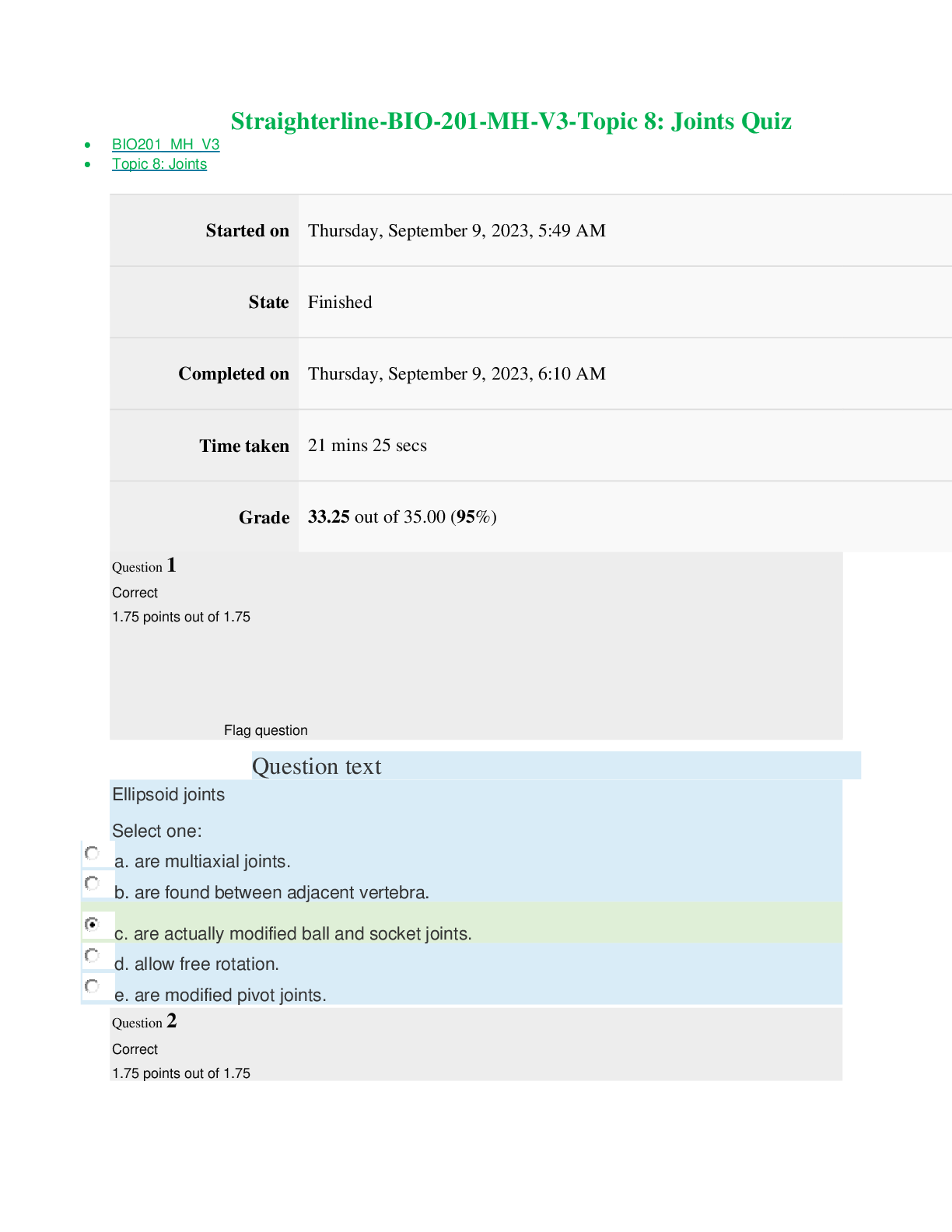
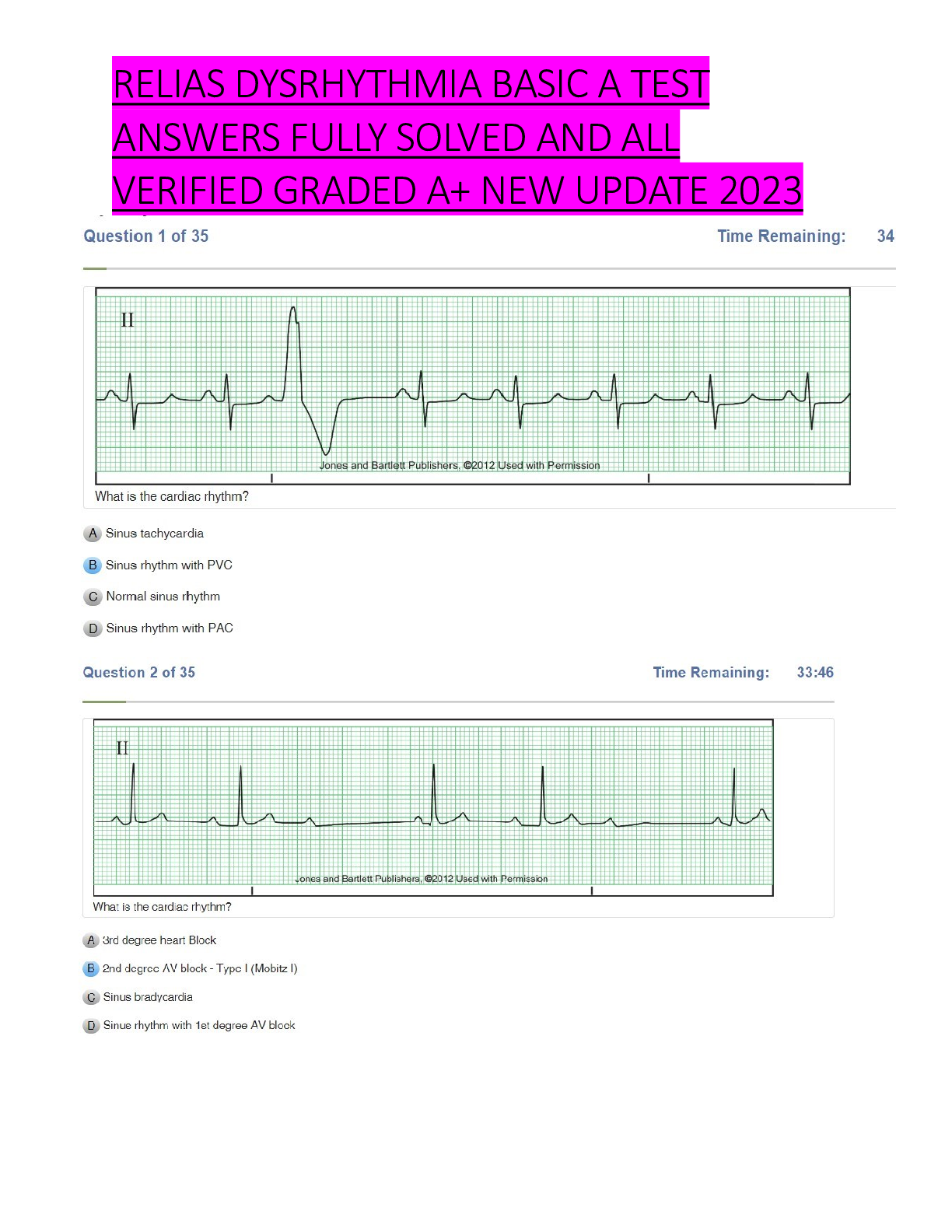
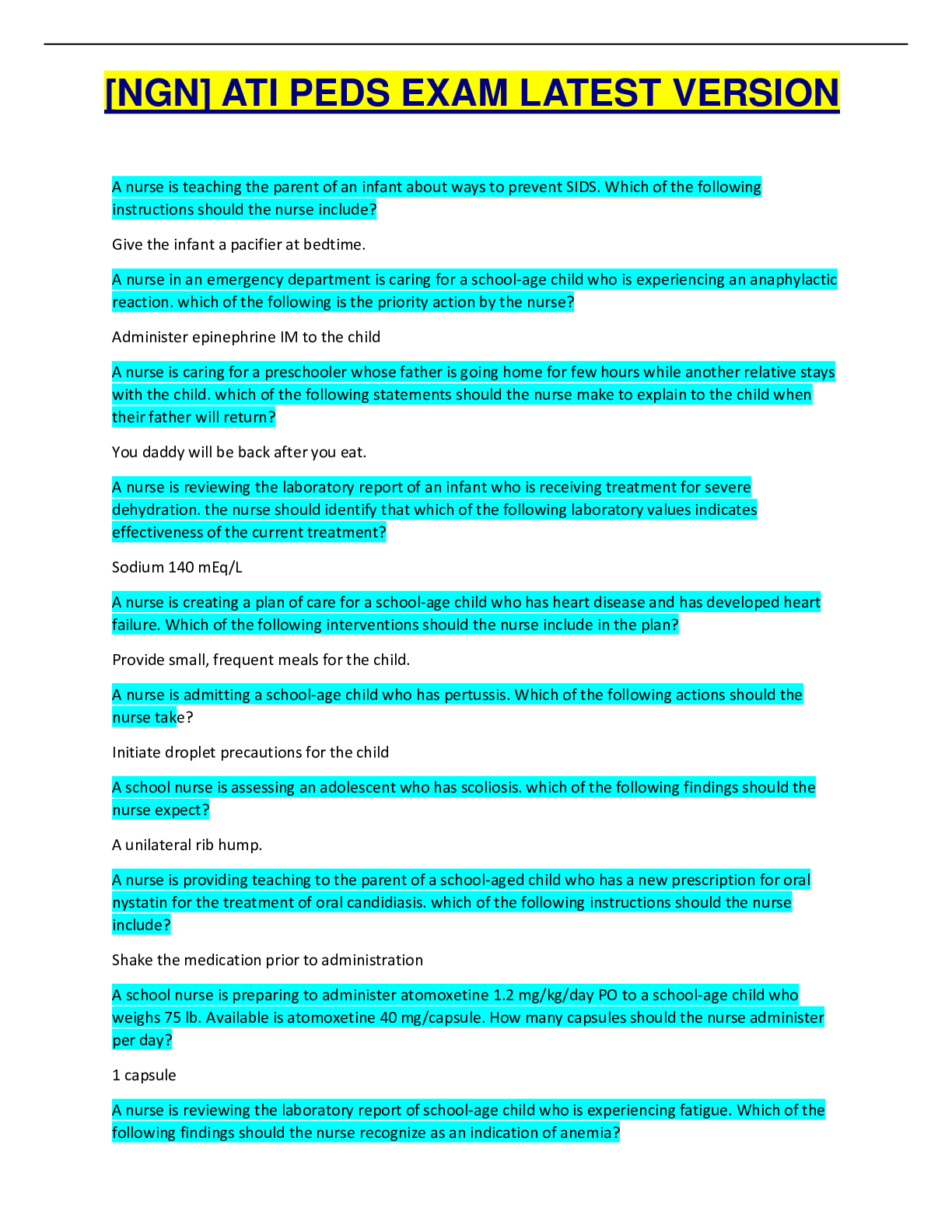


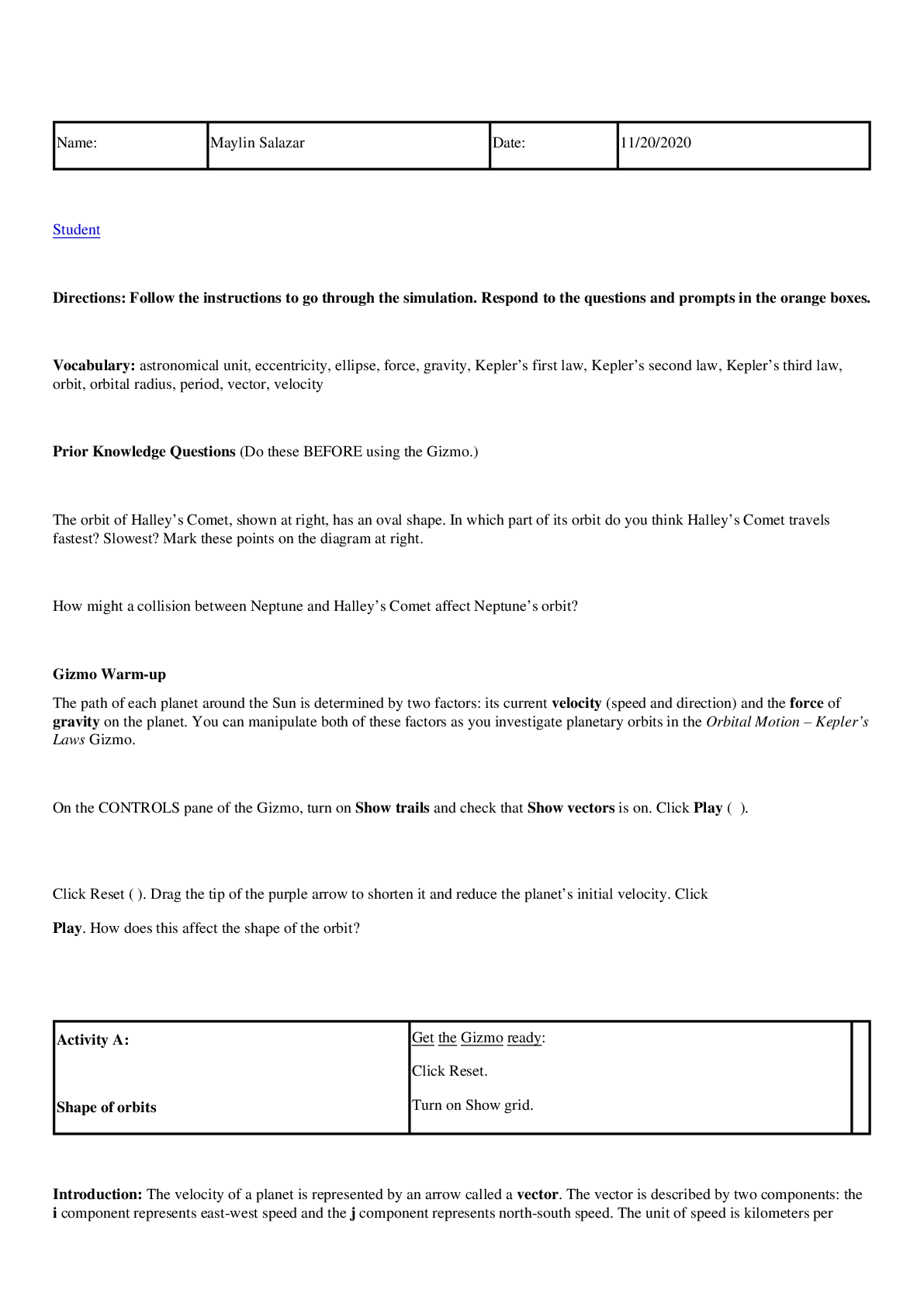

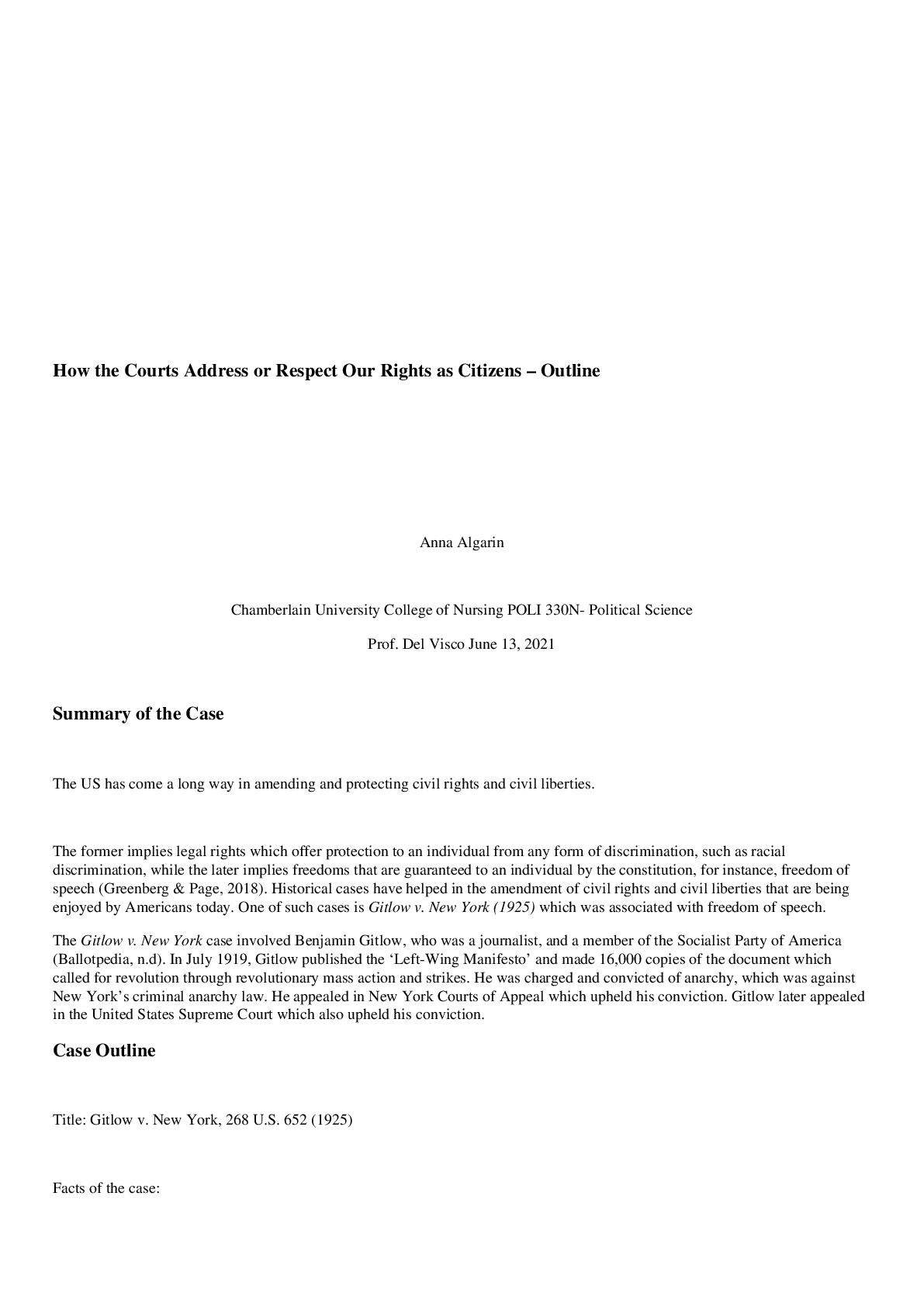
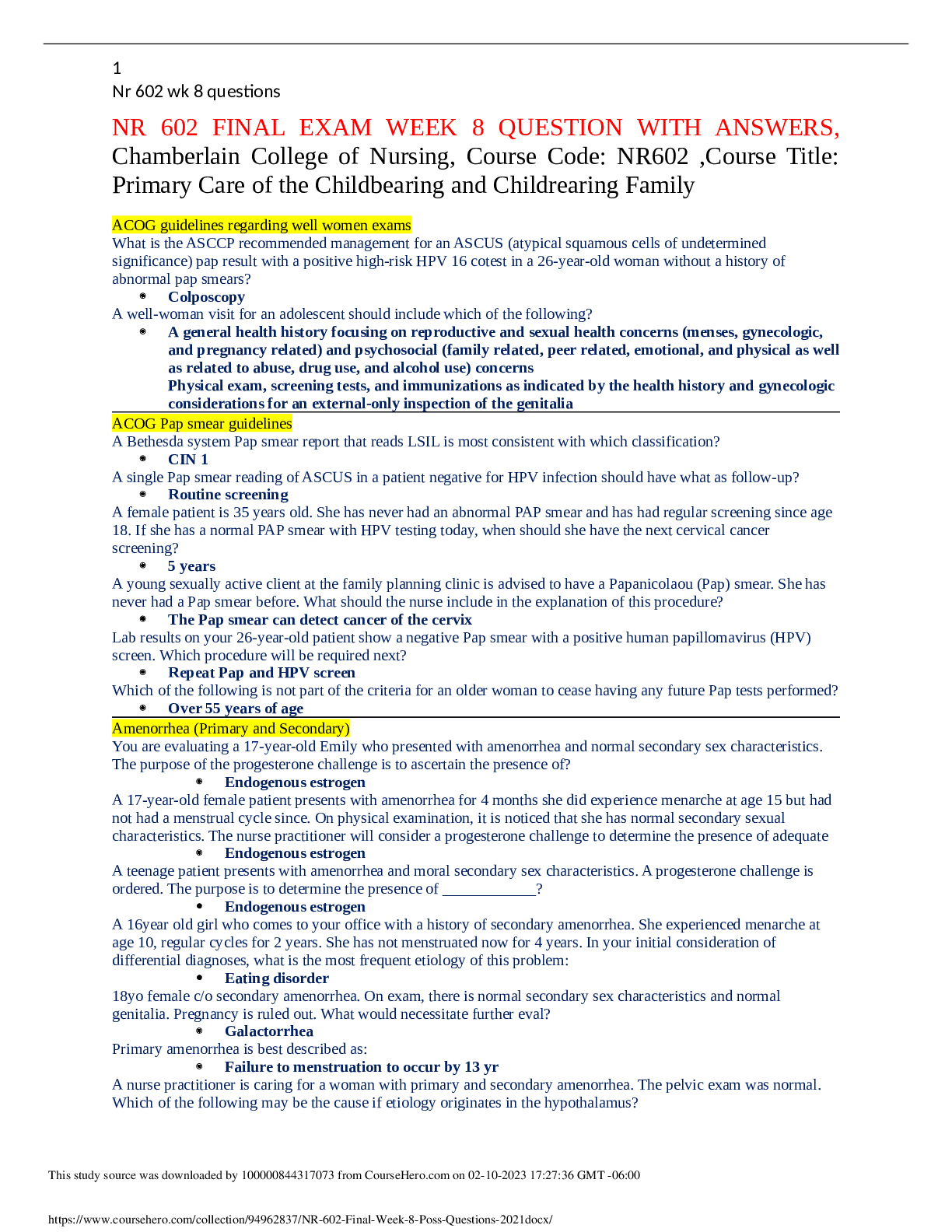





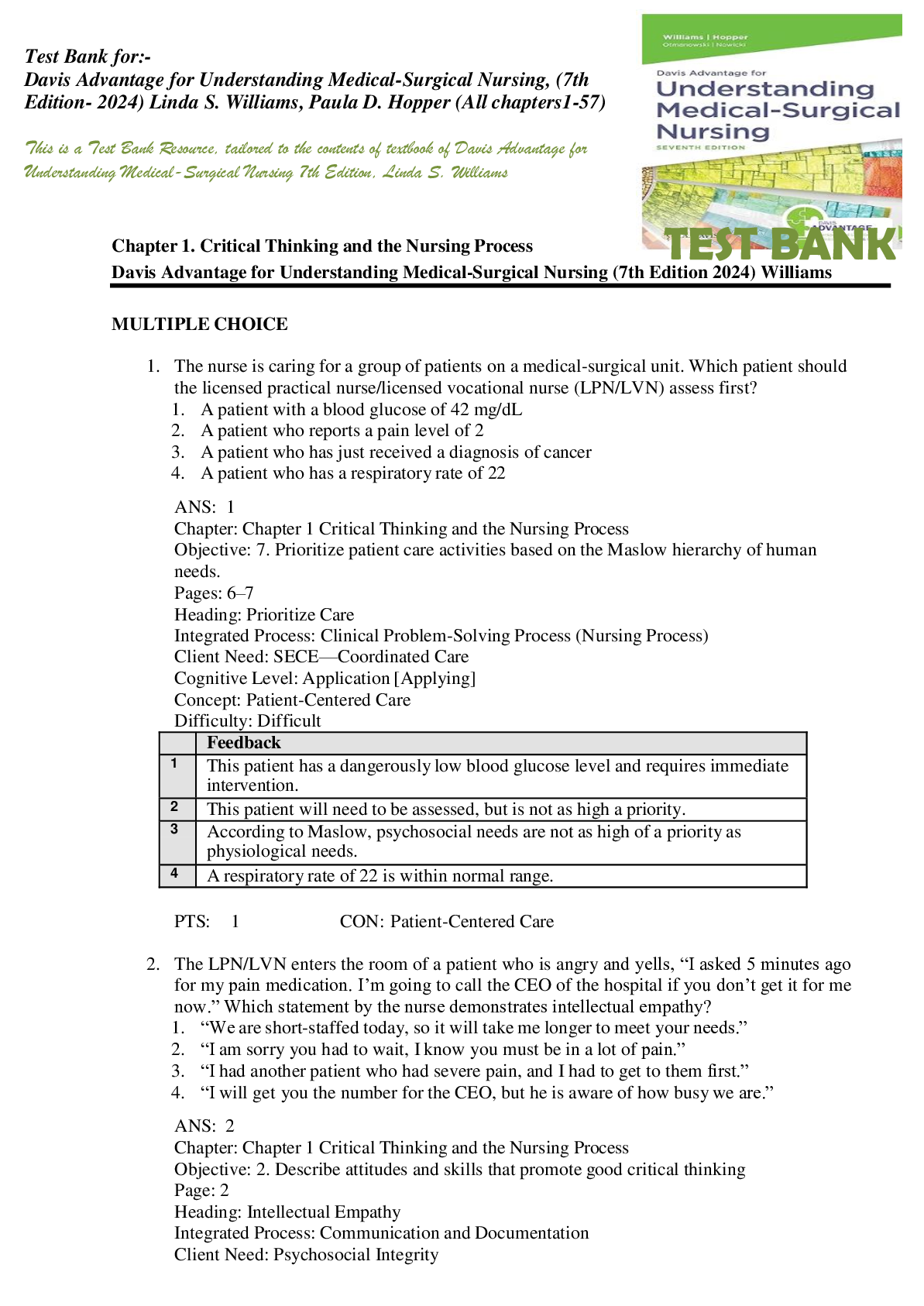
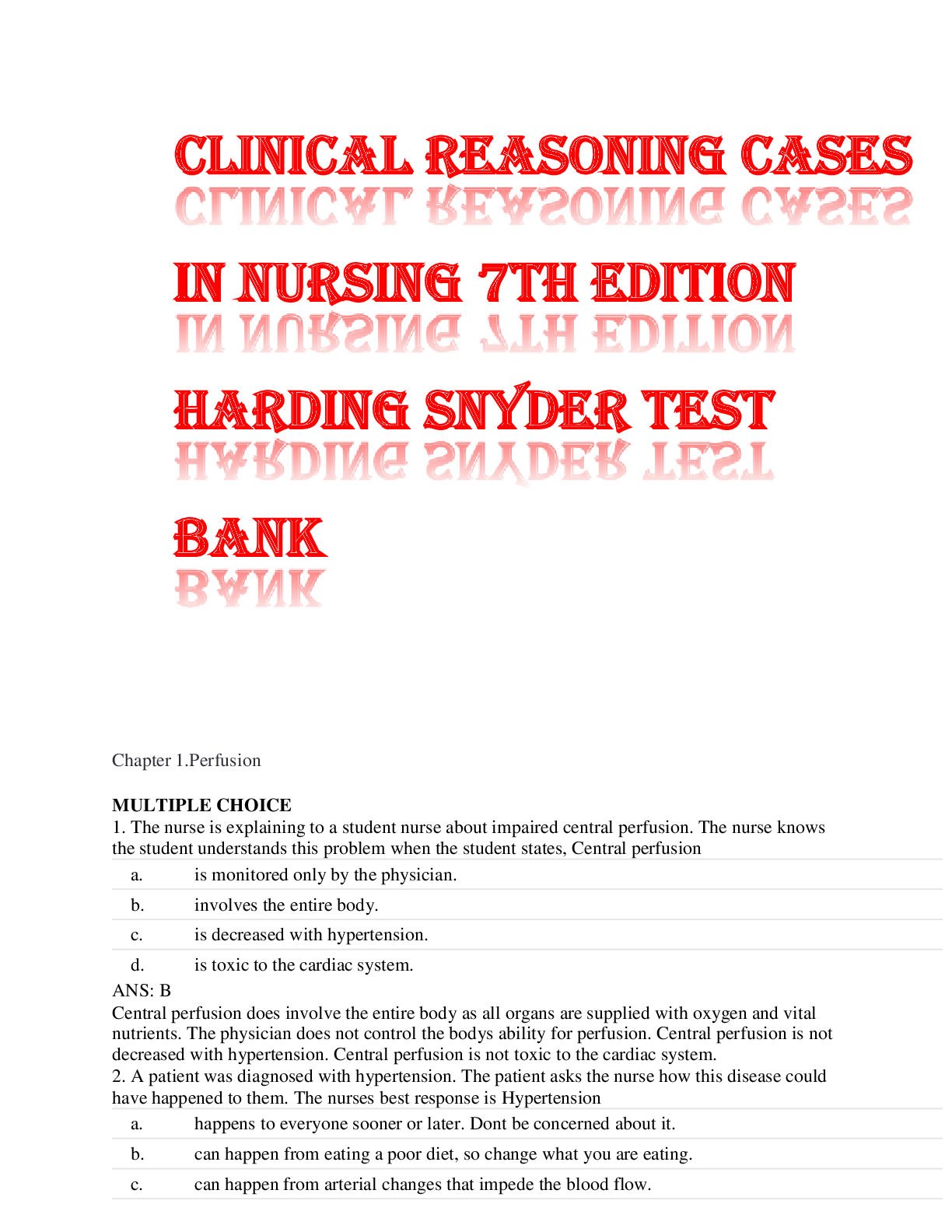


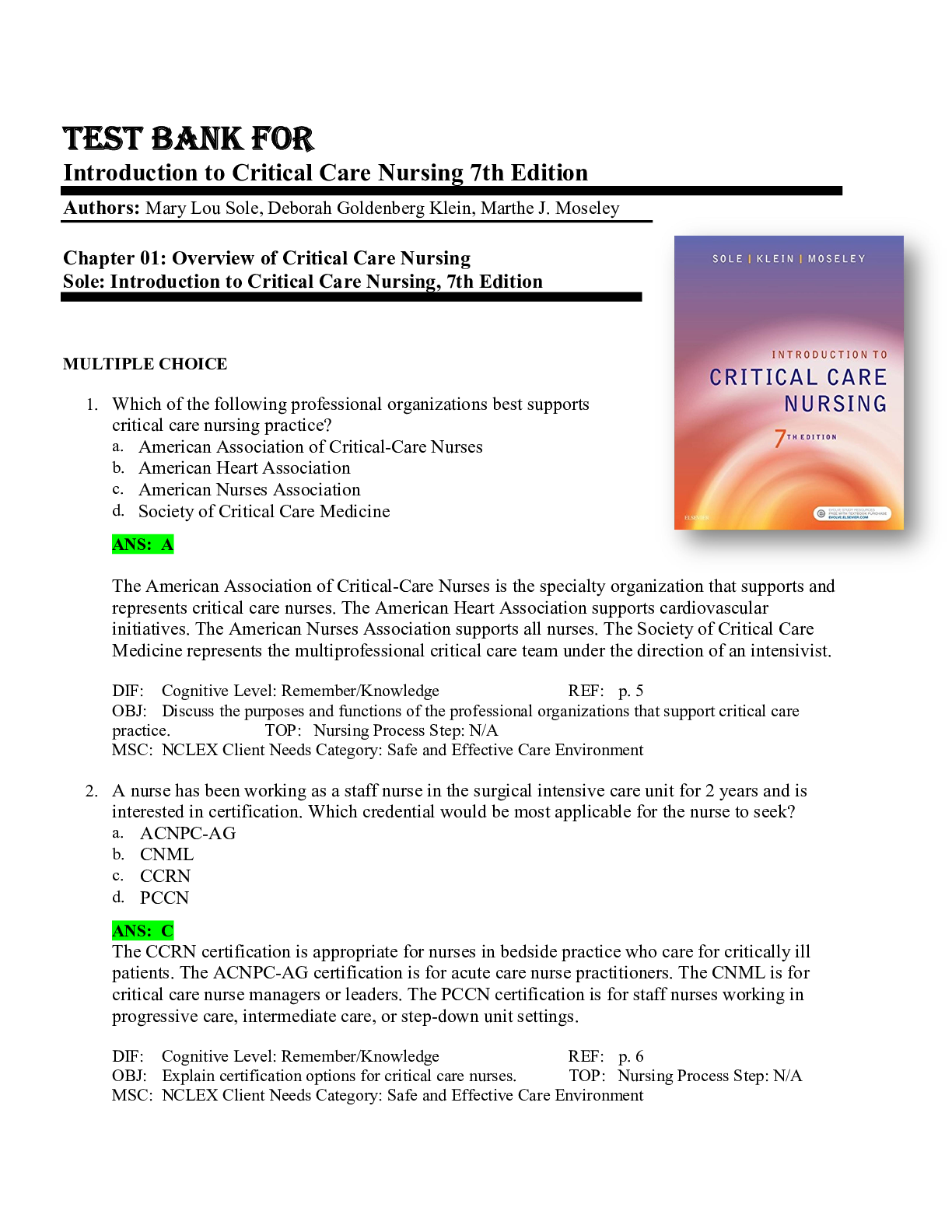




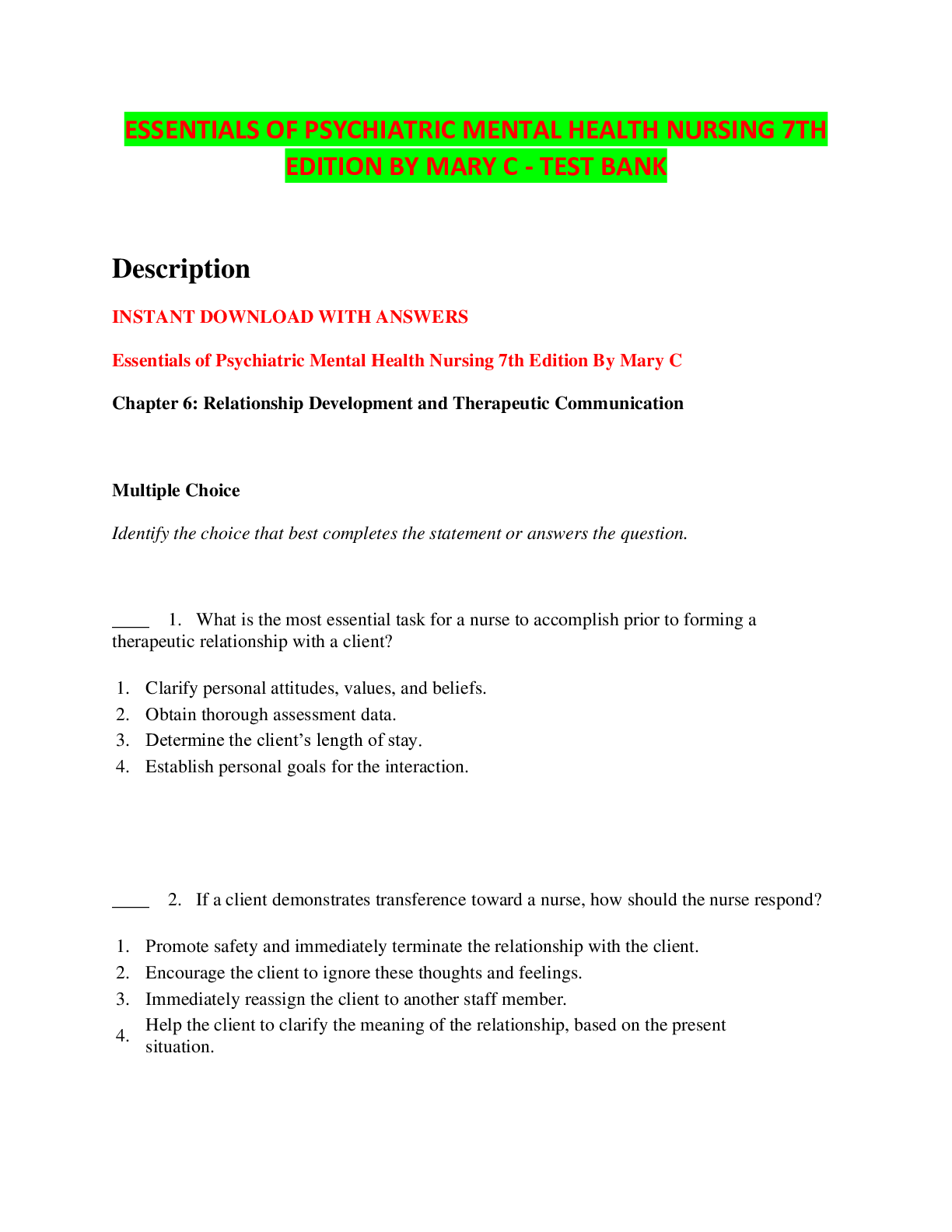
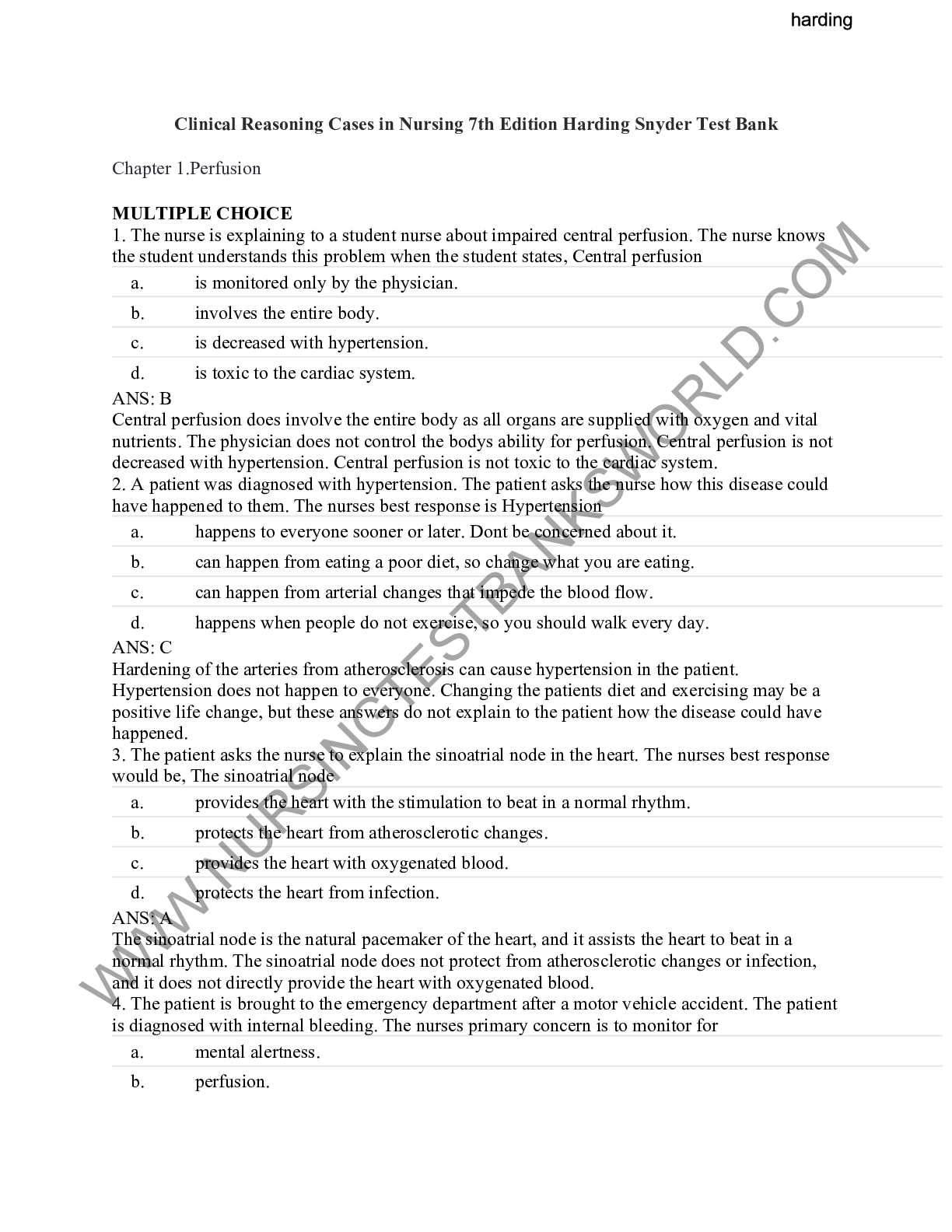

 (1).png)

